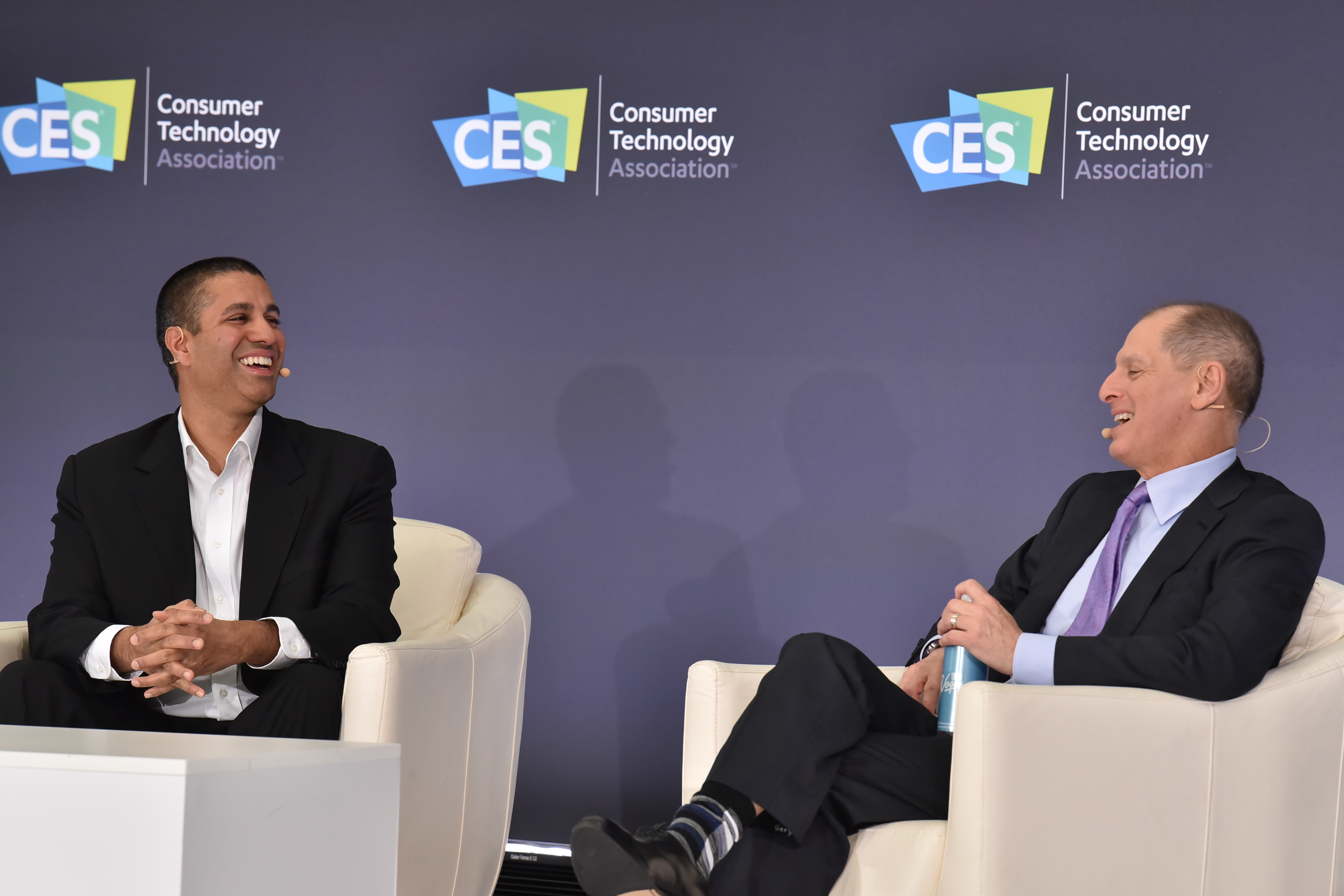After famously ducking out of appearances in previous CES panels—a result of the uproar from the industry and the public over his controversial net neutrality rule changes—FCC chair Ajit Pai sat down with CTA president and CEO Gary Shapiro at CTA’s annual FCC/FTC session.
Pai’s conversation with Shapiro followed one with the FTC’s Joe Simons, who discussed privacy and security issues, as well as antitrust proposals aimed at potentially breaking up tech giants.

Shapiro immediately addressed both Pai’s appearance and the policy elephants in the room, lightheartedly feigning uncertainty of whether Pai was indeed backstage. Once seated, Pai noted that despite dire predictions that the internet as we knew it would end under his new carrier-centric rules, the opposite has instead resulted.
[Net Neutrality - Why Do I Care? Why Should You?]
“The indicators are in the other direction,” Pai proudly asserted. “Since we made the decision in December 2017, broadband speeds are up 60 percent according to Ookla, infrastructure investment is up, more Americans are getting connected to the internet than ever before, and more fiber was laid in 2019 to homes and businesses in the United States than in any year since they've been keeping records, breaking the record we set in 2018. And I would like to say that thanks to our efforts, more Americans than ever before, faster than ever before, are able to hate-tweet their favorite FCC chairman.”
Pai and Shapiro spent most of their 30-plus minutes together discussing the pros and cons of 5G deployment. Issues included spectrum allocation and auctions, the lack of American 5G infrastructure suppliers, fiber deployment, and wider broadband access to more rural and tribal areas. Pai noted one of the real-world roadblocks to wide deployment isn’t a matter of technology, but manpower.
“In many parts of the country, it’s difficult to find people able to do this work,” he said, describing rural 5G sites he has visited in Mississippi and New Hampshire. “You quickly recognize that this is not a job that is easy to do. I know it’s not the sexiest thing to talk about how demanding it is to get up a tower and install infrastructure, but that really is one of the core jobs of building these networks. You’re outside, in many cases the condition isn’t great, it’s raining or cold. It’s a young person’s job, and a lot of young people have better opportunities, especially indoor opportunities, that aren’t as physically demanding. That’s one of the challenges we’re going to have to think about: how to develop the workforce of the future to build these wireless networks.”
Pai also discussed his passion project: establishing 988 as a national suicide prevention hotline. “This is something that matters to me a lot,” he said. “It’s affected my family and me personally, and [the] one thing I would like to be able to deliver on in the memory of those who've been suffering and those who've unfortunately died by suicide is making sure that anybody who’s out there struggling in this country will one day be able to access an easy-to-remember three-digit number so they don’t take that step.”
In his session, the more soft- and slow-talking Simons stressed a bipartisan approach to state versus federal privacy laws, amending the century-old FTC act to deal with problems in the modern world, using emerging health technologies to deal with rising health costs, and the idea of potentially breaking up the big tech companies. Simons emphasized how the FCC vigorously audits and pursues companies who break the law. But simply breaking them up because they’re too big is, according to Simons, a bad policy.
“We don’t go after companies just because they are big and successful,” Simons said. “They actually have to commit an antitrust violation; they have to do something anti-competitive. We encourage firms to compete. If they do that and become successful—maybe to the extreme of monopolizing a market if they’ve done it legally—we shouldn’t then turn around and penalize them. We want companies to be competitive and to produce better products and cheaper prices.”
For more CES 2020 news and stories, visit twice.com/tag/ces-2020.